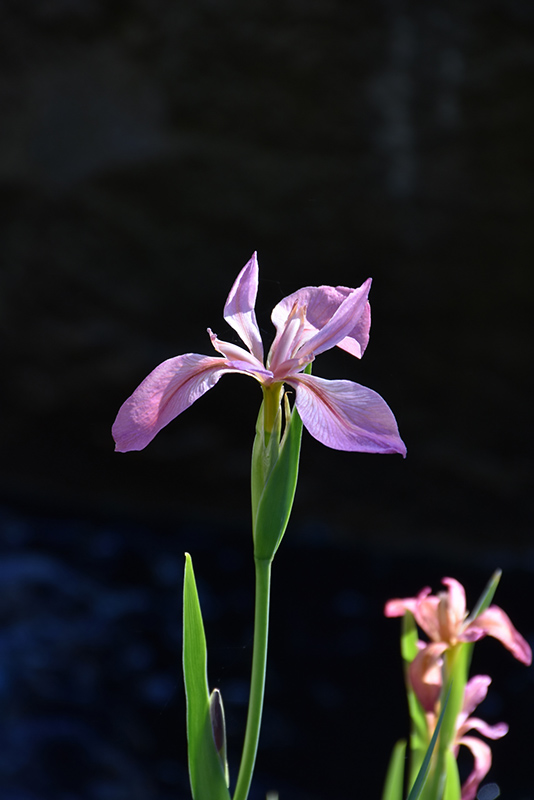Height: 30 inches
Spacing: 18 inches
Sunlight:
![]()
![]()
Hardiness Zone: 5b
Group/Class: Louisiana Iris
Description:
This interesting iris is named for the unusual copper color of its beardless and crestless blooms; native to southern wetlands; an excellent choice for low, wet garden areas or pondside planting; will quickly form dense colonies
Ornamental Features
Copper Iris has masses of beautiful coppery-bronze flag-like flowers at the ends of the stems from mid to late spring, which are most effective when planted in groupings. The flowers are excellent for cutting. Its sword-like leaves remain grayish green in color throughout the season.
Landscape Attributes
Copper Iris is an herbaceous perennial with an upright spreading habit of growth. Its medium texture blends into the garden, but can always be balanced by a couple of finer or coarser plants for an effective composition.
This plant will require occasional maintenance and upkeep, and should be cut back in late fall in preparation for winter. It is a good choice for attracting hummingbirds to your yard, but is not particularly attractive to deer who tend to leave it alone in favor of tastier treats. It has no significant negative characteristics.
Copper Iris is recommended for the following landscape applications;
- Mass Planting
- General Garden Use
- Container Planting
- Bog Gardens
Planting & Growing
Copper Iris will grow to be about 24 inches tall at maturity, with a spread of 24 inches. When grown in masses or used as a bedding plant, individual plants should be spaced approximately 18 inches apart. It grows at a medium rate, and under ideal conditions can be expected to live for approximately 10 years. As an herbaceous perennial, this plant will usually die back to the crown each winter, and will regrow from the base each spring. Be careful not to disturb the crown in late winter when it may not be readily seen!
This plant does best in full sun to partial shade. It prefers to grow in moist to wet soil, and will even tolerate some standing water. It is not particular as to soil type or pH. It is somewhat tolerant of urban pollution. This species is native to parts of North America. It can be propagated by division.
Copper Iris is a fine choice for the garden, but it is also a good selection for planting in outdoor pots and containers. With its upright habit of growth, it is best suited for use as a 'thriller' in the 'spiller-thriller-filler' container combination; plant it near the center of the pot, surrounded by smaller plants and those that spill over the edges. It is even sizeable enough that it can be grown alone in a suitable container. Note that when growing plants in outdoor containers and baskets, they may require more frequent waterings than they would in the yard or garden.

